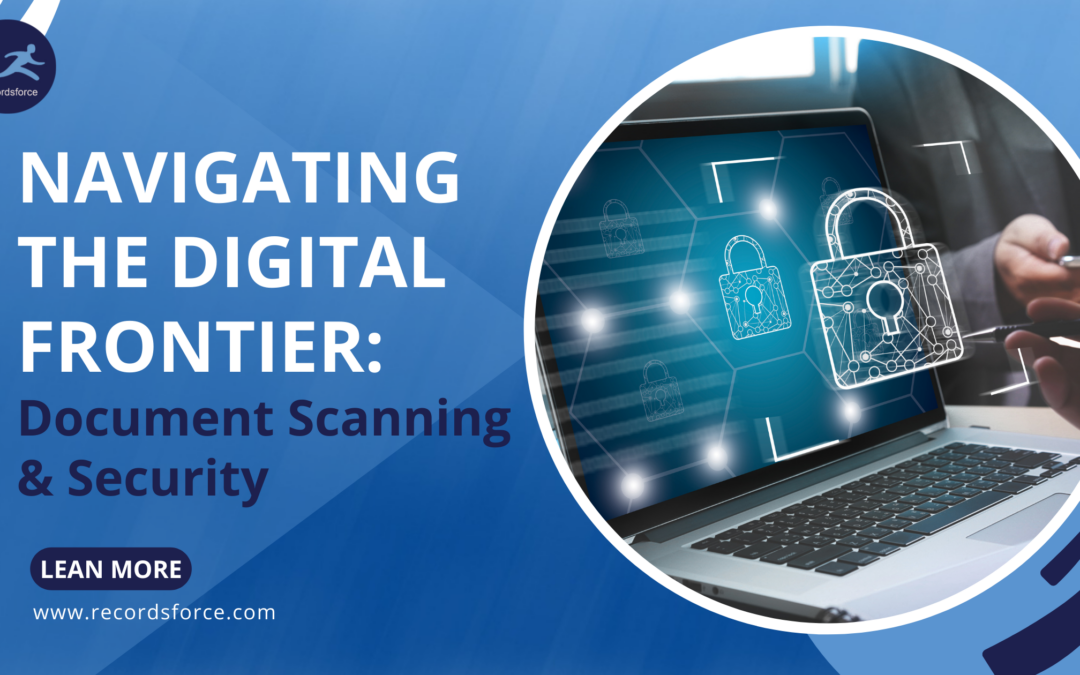The transition from paper to digital documentation and management has revolutionized how businesses and individuals store, access and share information. However, with these advancements come new challenges and vulnerabilities that demand careful consideration. The importance of document scanning and security over your business information cannot be overstated.
1. The Advantages of Document Scanning
Document scanning, or the process of converting physical documents into a digital format, offers numerous benefits that extend beyond mere convenience. Here are some key advantages:
- Enhanced Accessibility: Digital documents can be accessed remotely and instantly, eliminating the need for physical presence. This is especially crucial in today’s remote and hybrid work environment.
- Space & Cost Efficiency: Storing physical documents demands space and resources. DIgitizing documents reduces storage costs and frees up physical space for more productive uses.
- Searchability & Sharing: Digital documents can be effortlessly shared and collaborated on by multiple individuals, regardless of their location.
- Disaster Recovery: Physical documents are vulnerable to natural disasters and accidents. Digital copies can be securely backed up, ensuring critical information remains safe and recoverable.
2. The Security Imperative
While document scanning offers these compelling advantages, security must remain a top priority. While paper documents can get lost, stolen or misfiled, the digitization of documents introduces new fears, such as unauthorized access, data breaches and loss of confidentiality. To address these concerns, robust security measures are essential. Here are some of the security measures that should be in place by your document scanning provider and document management software:
- Encryption: Your document scanning providers and document management software should utilize strong encryption protocols to safeguard the confidentiality of your digital documents both during storage and transmission.
- Access Control: Strict access control ensures that only authorized individuals can view, edit, or share sensitive documents. Multi-factor authentication adds an extra layer of security.
- Regular Updates & Patches: Keep all software and systems up to date to address potential security vulnerabilities and exploits.
- User Training: Educate employees about best practices for handling digital documents, including recognizing phishing attempts, protecting passwords, and practicing good cybersecurity hygiene.
- Secure Backup & Redundancy: Back up digital documents regularly to secure off-site locations. This guards against data loss due to cyber attacks or technical failures.
3. Navigating Compliance & Regulations
In addition to protecting against cyber threats, businesses must navigate a complex landscape of regulations governing digital documents. Compliance with regulations such as DGPR, HIPAA, and industry-specific standards is critical to avoid legal ramifications.
- Data Privacy Regulations: Understand the regulations applicable to your industry and region. Ensure that personal and sensitive information is handled in accordance with these laws.
- Retention Policies: Establish clear document retention and destruction policies to ensure compliance with legal requirements.
- Audit Trails: Maintain detailed records of document access and modifications to demonstrate accountability and compliance.
4. Choosing The Right Document Scanning Partner
Selecting a reliable document scanning provider is vital to ensuring both efficiency and security. Consider the following factors when evaluating potential partners:
- Experience & Expertise: Choose a provider with a proven track record in document scanning and security implementation.
- Security Measures: Inquire about the security protocols and encryption methods they employ, as discussed above, to protect your sensitive information.
- Compliance Knowledge: Ensure that your provider is well-versed in relevant industry regulations and can help you maintain compliance.
- Customization: Look for a document scanning partner who can tailor their services to your organization’s unique needs and requirements.
In conclusion, the integration of document scanning and document management into your business processes can significantly enhance efficiency, collaboration, and accessibility. However, these benefits must be balanced with robust security measures and adherence to relevant regulations. By prioritizing security, staying informed about best practices, and collaborating with the right provider, you can successfully navigate the digital frontier while safeguarding your valuable business information.

